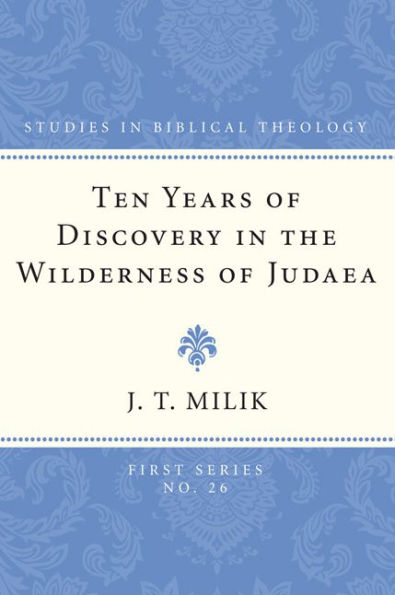Ten Years of Discovery in the Wilderness of Judaea
J. T. MILIK was a Polish priest who, after brilliant studies in Rome, worked in Jerusalem from 1952, first at the Ecole Biblique et Archeologique Francaise, and later in connection with the Centre National de la Recherche Scientifique. He took part in the exploration of the Qumran. From the beginning, he collaborated in the work of publication. With Father D. Barthelemy he published the fragments from Cave I, Qumran Cave I (Discoveries in the Judaean Desert), Oxford 1955; he was the most active member of the international team, which prepared for publication the considerable collection from Cave IV. The fragments from Cave V and the copper rolls from Cave III were entrusted to him. He would eventually publish the Hebrew and Aramaic documents from Murabba'at; he published some fragments from Hirbet Mird and from unidentified caves in the south. He had been given direct access to all the documents still unpublished, which were kept together in the Palestine Archaeological Museum in Jerusalem. In short, this work was written by a specialist who knew better than anyone the places and documents of which he spoke.
1019045313
Ten Years of Discovery in the Wilderness of Judaea
J. T. MILIK was a Polish priest who, after brilliant studies in Rome, worked in Jerusalem from 1952, first at the Ecole Biblique et Archeologique Francaise, and later in connection with the Centre National de la Recherche Scientifique. He took part in the exploration of the Qumran. From the beginning, he collaborated in the work of publication. With Father D. Barthelemy he published the fragments from Cave I, Qumran Cave I (Discoveries in the Judaean Desert), Oxford 1955; he was the most active member of the international team, which prepared for publication the considerable collection from Cave IV. The fragments from Cave V and the copper rolls from Cave III were entrusted to him. He would eventually publish the Hebrew and Aramaic documents from Murabba'at; he published some fragments from Hirbet Mird and from unidentified caves in the south. He had been given direct access to all the documents still unpublished, which were kept together in the Palestine Archaeological Museum in Jerusalem. In short, this work was written by a specialist who knew better than anyone the places and documents of which he spoke.
25.0
In Stock
5
1

Ten Years of Discovery in the Wilderness of Judaea
182
Ten Years of Discovery in the Wilderness of Judaea
182Paperback
$25.00
25.0
In Stock

Product Details
| ISBN-13: | 9781608990368 |
|---|---|
| Publisher: | Wipf & Stock Publishers |
| Publication date: | 10/01/2009 |
| Series: | Studies in Biblical Theology, First , #26 |
| Pages: | 182 |
| Product dimensions: | 5.90(w) x 8.90(h) x 0.40(d) |
From the B&N Reads Blog
